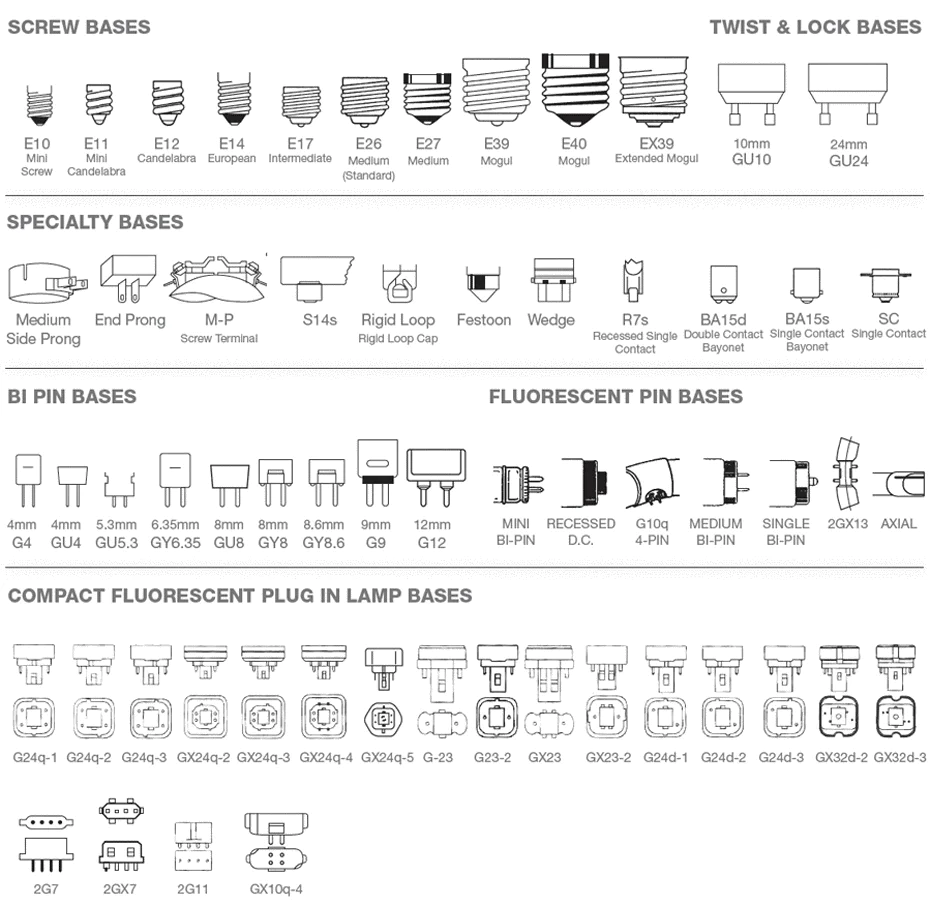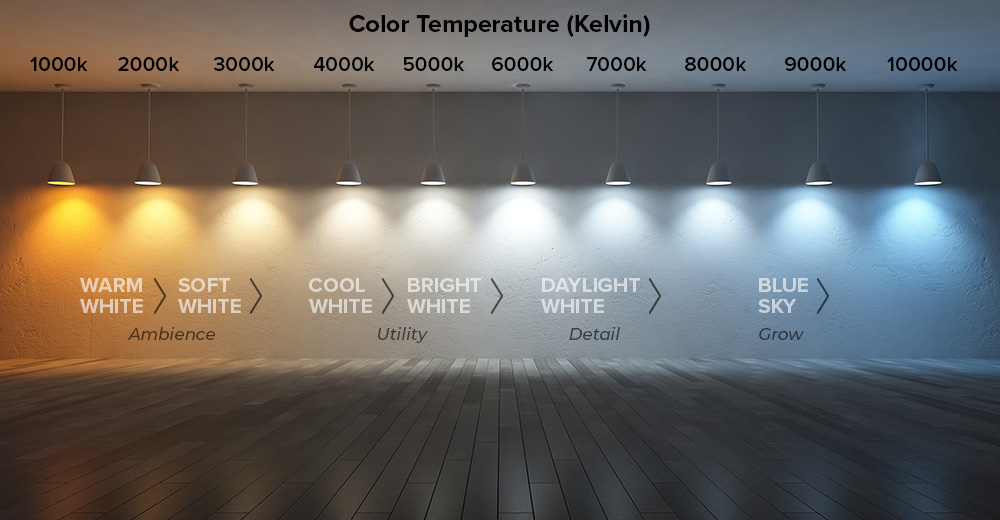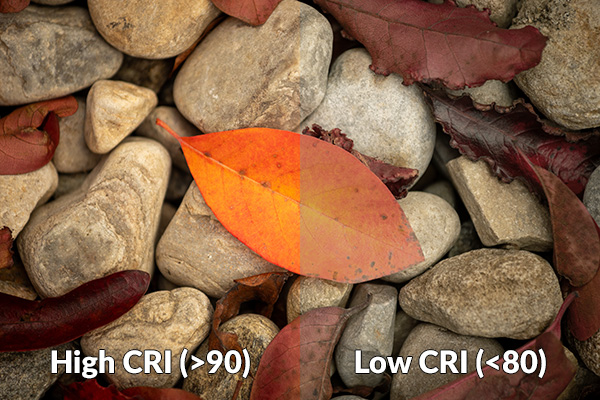Here’s what you need to know about light bulbs so that you buy the best kind for your needs.
Table of Contents
Light Bulb Bases
“Standard” light bulbs use an “E26” base. Different bulb sockets require different bases. Buy a bulb with the base corresponding to your fixture.

Remember that not all light bulb bases yield the same light bulb shape! (See next section.)
Light Bulb Shapes
“A19” is one of the most common bulb shapes. Light bulbs come in tons of different shapes.

Remember that not all light bulb shapes yield the same light bulb base! (See previous section.)
Color Rendering Index
Light bulbs are assigned a Color Rendering Index (CRI) between 0-100. Objects lit by a bulb with a CRI of 100 will appear the same as if they were lit by the midday sun. Objects lit by a bulb with a low CRI will appear unnatural, desaturated, and less vibrant.
I recommend always purchasing 90+ CRI bulbs. If a bulb doesn’t specify its CRI on its packaging or spec sheet, it’s probably a low-CRI bulb and one you should avoid.
High-CRI bulbs are essential for human gathering and socializing spaces. People notice when they are lit by low-CRI bulbs, even if they can’t pinpoint the source of their discomfort.
Color Temperature

The color temperature of a light is represented by a number with the units “Kelvin,” shortened to “K”. for household lightbulbs, this number generally ranges between 1500K and 10000K. The range for indoor bulbs is most commonly bound between ~2700K and ~5000K.
The lower the number, the warmer or more yellow the light is. Our Sun emits light at a color temperature between ~5500K and ~10000K, depending on atmospheric conditions (clouds, snow) and the height of the sun in the sky.
| Home Area | Color Temperature Recommendation |
|---|---|
| Living area Bedroom Hallway | 2700-3000K Sometimes referred to as “Soft White” to “Bright White” |
| Bathroom Kitchen | ~5000K Sometimes referred to as “Daylight” |
| Reading Areas | 5500K |
For living areas, bedrooms, and hallways, I recommend a warmer color temperature bulb at 2700-3000K. 2700K is sometimes called “Soft White”; 3000K is sometimes called “Bright White”. These warmer tones make living spaces feel more inviting. Whether you prefer the slightly warmer temperature of 2700K versus a cooler 3000K is personal preference that you’ll glean from personal experience and experimentation.
For bathrooms and kitchens, I recommend a cooler color temperature bulb at ~5000K. This temperature is often perceived as more “natural” and “neutral” without being “too blue”, which is great for rendering food “more precisely” and human skin “more naturally.”
For reading areas, find a bulb with a color temperature at an even cooler 5500K, which is the color temperature of a clear midday sun. 5500K bulbs make for great reading lights.
Brightness
The brightness of a light bulb is usually represented by the unit “lumen” (one lumen; ten lumens). The science of brightness is fun!
Most “standard” light bulbs you buy at the store peak at 600-800 lumens. For living areas, I like my lights to be bright. If I’m using a single bulb to light an area, I look for bulbs in the range of 1000-1200 lumens.
- If your bulb is going to be shaded somehow (e.g. by a lampshade), “higher brightness is better”.
- If your bulb is embedded in a ceiling fixture, look for a bulb with brightness of 1000-1200 lumens
Not all light bulbs are designed to be dimmable. If you try to dim a non-dimmable bulb, your light may flicker, or it may not turn on at all.
We’re in the age of energy-efficient LEDs, so you usually don’t have to think about a light bulb drawing too much power from a given light fixture. Instead, we only have to think about how bright we want our lights to be.
Other Considerations
- Avoid “smart” bulbs unless they’re made by a reputable manufacturer. Lots of cheap “smart” bulbs these days are controlled by smartphone apps that steal your personal data, or straight up don’t work. If you’re interested in smart bulbs, I recommend Philips’ HUE bulbs. They’re expensive, but they’re great lights. Philips HUE lights come in “white” or “RGB” (color) variants.
- If you aren’t sure what color temperature bulb you want and are excited to experiment, consider a Philips Hue “Warm-to-cool white” bulb. This bulb will let you manually change your light’s color temperature from 2200K to 6500K and everywhere in between!
- All light bulbs will have information about their brightness and color temperature on the packaging. It’s fun to go to a hardware store and look at all the different bulbs’ packaging!
